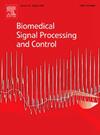Nnet:用于MRI脑结构精确分割的n型神经网络
IF 4.9
2区 医学
Q1 ENGINEERING, BIOMEDICAL
引用次数: 0
摘要
磁共振成像对脑结构的准确分割在特发性常压脑积水(iNPH)的诊断和治疗中起着关键作用。然而,现有的基于空间域的方法受到脑解剖结构复杂性和医学图像对比度低的限制,难以实现高精度的组织边界分割。为了解决这一挑战,本文从频域的新视角重新审视脑结构分割问题,提出了一种n型神经网络架构(Nnet)。Nnet通过三个平行分支的协同操作,高效提取图像中的低频内容信息和高频边缘纹理信息,从而实现目标边界的精确定位。此外,Nnet还集成了频域在线增强(FOE)模块和特征通信(FCM)模块,进一步优化了分割性能。FOE模块通过门控机制调节信道间的竞争与合作,有效构建频域特征之间的关系,减少局部信息失真。FCM模块使用“生长”和“通信”机制,通过将高层和低层特征放在同一层次进行通信,从根本上提高了特征一致性,消除了分支之间的语义鸿沟问题。本文在两个公开的脑MRI T1序列数据集(MALC数据集和IBSR数据集)上的结果表明,Nnet的Dice系数平均分别提高了1.29%和1.47%,明显优于目前的先进方法。本文章由计算机程序翻译,如有差异,请以英文原文为准。
Nnet: N-type neural network for accurate segmentation of brain structures in MRI
Accurate segmentation of brain structures in magnetic resonance imaging plays a key role in the diagnosis and treatment of idiopathic Normal Pressure Hydrocephalus (iNPH). However, existing spatial domain-based methods are limited by the complexity of brain anatomical structures and the low contrast of medical images, making it difficult to achieve high-precision tissue boundary segmentation. To address this challenge, this paper re-examines the problem of brain structure segmentation from a new perspective in the frequency domain and proposes an N-type neural network architecture (Nnet). Nnet efficiently extracts low-frequency content information and high-frequency edge texture information in images through the coordinated operation of three parallel branches, thereby achieving accurate positioning of the target boundary. In addition, Nnet integrates the frequency domain online enhancement (FOE) module and the feature communication (FCM) module to further optimize the segmentation performance. The FOE module regulates the competition and cooperation between channels through the gating mechanism, effectively constructs the relationship between frequency domain features and reduces local information distortion. The FCM module uses the “growth” and “communication” mechanisms to fundamentally improve feature consistency by placing high-level and low-level features at the same level for communication, eliminating the semantic gap problem between branches. The results of this paper on two public brain MRI T1 sequence datasets (MALC dataset and IBSR dataset) show that the Dice coefficient of Nnet is improved by 1.29% and 1.47% on average, respectively, which is significantly better than the current advanced methods.
求助全文
通过发布文献求助,成功后即可免费获取论文全文。
去求助
来源期刊

Biomedical Signal Processing and Control
工程技术-工程:生物医学
CiteScore
9.80
自引率
13.70%
发文量
822
审稿时长
4 months
期刊介绍:
Biomedical Signal Processing and Control aims to provide a cross-disciplinary international forum for the interchange of information on research in the measurement and analysis of signals and images in clinical medicine and the biological sciences. Emphasis is placed on contributions dealing with the practical, applications-led research on the use of methods and devices in clinical diagnosis, patient monitoring and management.
Biomedical Signal Processing and Control reflects the main areas in which these methods are being used and developed at the interface of both engineering and clinical science. The scope of the journal is defined to include relevant review papers, technical notes, short communications and letters. Tutorial papers and special issues will also be published.
 求助内容:
求助内容: 应助结果提醒方式:
应助结果提醒方式:


